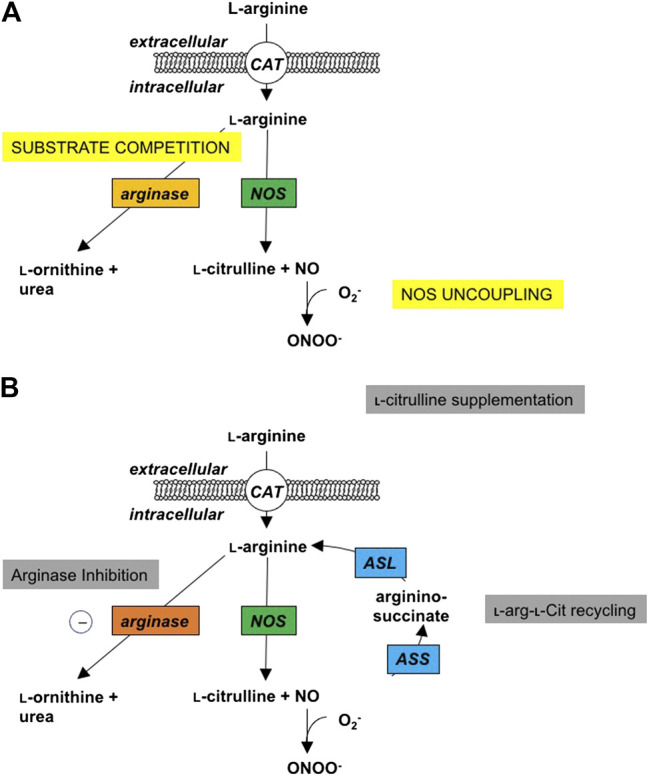FIGURE 1.

Changes in l-Arginine metabolism in disease and potential interventions. (A) Under normal physiologic conditions, cationic amino acid transporters (CAT) transport l-arginine into the cell where it can be metabolized by nitric oxide synthase (NOS) to NO and l-citrulline in a two-step process with Nω-hydroxy-l-arginine (NOHA) as intermediate. Under pathophysiologic conditions, excess induction of the arginase isozymes can lead to increased competition for substrate, thus limiting the l -arginine available for the NOS isozymes, and leading to NOS uncoupling and the production of peroxynitrite. (B) As potential sites of intervention, local or systemic administration of arginase inhibitors can increase the cellular bioavailability of l-arginine for the NOS isozymes and improve the production of NO. Supplemental l-citrulline can be recycled to l-arginine by argininosuccinate synthase (ASS) and argininosuccinate lyase (ASL), with argininosuccinate as an intermediate; thus, also improving intracellular bioavailability of l-arginine to improve NO production.
